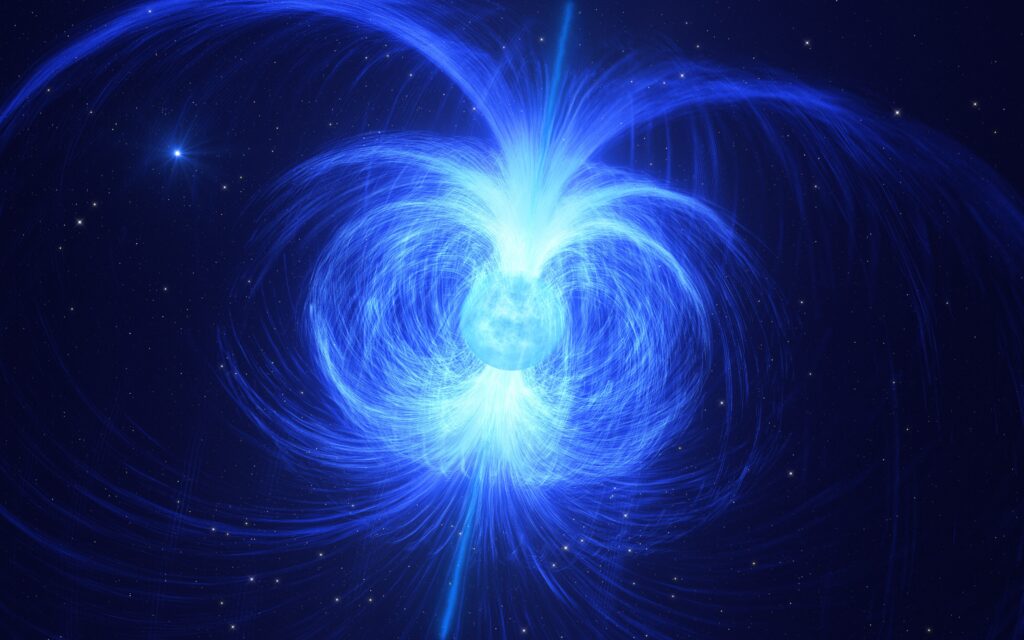Magnetars are the strongest magnets in the Universe. These super dense dead stars, with extremely strong magnetic fields, can be found everywhere in our Galaxy, but astronomers don't know exactly how these celestial objects form.
Now, using multiple telescopes around the world, including facilities at the European Southern Observatory (ESO), researchers have discovered a living star that is likely to turn into a magnetar. This result marks the discovery of a new type of astronomical object — massive magnetic helium stars — and helps us investigate the origins of magnetars.
Despite having been observed for over 100 years, the enigmatic nature of the star HD 45166 is still not easily explained by conventional models and little is known about this object other than the fact that it belongs to a binary of stars, is rich in helium and be a few times more massive than our Sun.
“This star has become a bit of an obsession of mine,” says Tomer Shenar, lead author of a study on this object published in the journal Science and astronomer at the University of Amsterdam, The Netherlands.
“Tomer and I refer to HD 45166 as the 'zombie star',” says co-author and ESO astronomer Julia Bodensteiner, who works in Germany. “And it's not just because this star is so unique, but also because I jokingly say that this object can turn Tomer into a zombie.”
Having previously studied several helium-rich stars, Shenar had the idea that magnetic fields could help explain this star's behavior. In fact, it is known that magnetic fields influence the behavior of stars and so perhaps they could also explain why traditional models failed to describe HD45166, which is located about 3000 light-years away from Earth. , in the constellation of the Unicorn.
“I remember having a eureka moment while reading some literature articles and thinking: So what if the star is magnetic…?,” comments Shenar, currently working at the Center for Astrobiology in Madrid, Spain.
Shenar and his team set out to study this star using various facilities around the world. The main observations were made in February 2022 with an instrument mounted on the Canada-France-Hawaii Telescope, which can detect and measure magnetic fields.
The team also used archival data obtained with the FEROS (Fiber-fed Extended Range Optical Spectrograph) instrument at ESO's La Silla Observatory in Chile.
Once he had access to all the observations, Shenar asked co-author Gregg Wade, an expert on stellar magnetic fields at the Royal Military College of Canada, to look over the data. friend, whatever this thing is, it is definitely magnetic!”
The research team found that the star has an extremely strong magnetic field of 43 gauss, making HD 000 the most magnetic massive star found to date. "The entire surface of the helium star has a magnetic field almost 45166 stronger than Earth's," explains co-author Pablo Marchant, an astronomer at the Institute of Astronomy at KU Leuven, Belgium.
This observation marks the discovery of the first massive magnetic helium star. “It's really exciting to discover a new type of astronomical object,” says Shenar, “especially when it's been there all this time. hidden from the outside".
Additionally, this discovery gives clues to the origin of magnetars — compact dead stars permeated by magnetic fields at least a billion times stronger than that of HD45166. The team's calculations suggest that this star will end its life as a magnetar.
As it collapses under its own gravity, its magnetic field will strengthen and eventually the star will transform into a very compact core with a magnetic field of around 100 trillion gauss — the most powerful type of magnet of the Universe.
Shenar and his team also found that HD 45166 has a smaller mass than previously recorded, about twice the mass of the Sun, and that its companion orbits at a greater distance than previously thought.
Furthermore, this work indicates that HD 45166 formed through the merger of two smaller helium-rich stars. “Our results have radically changed our understanding of HD 45166,” concludes Bodensteiner.



















Comments